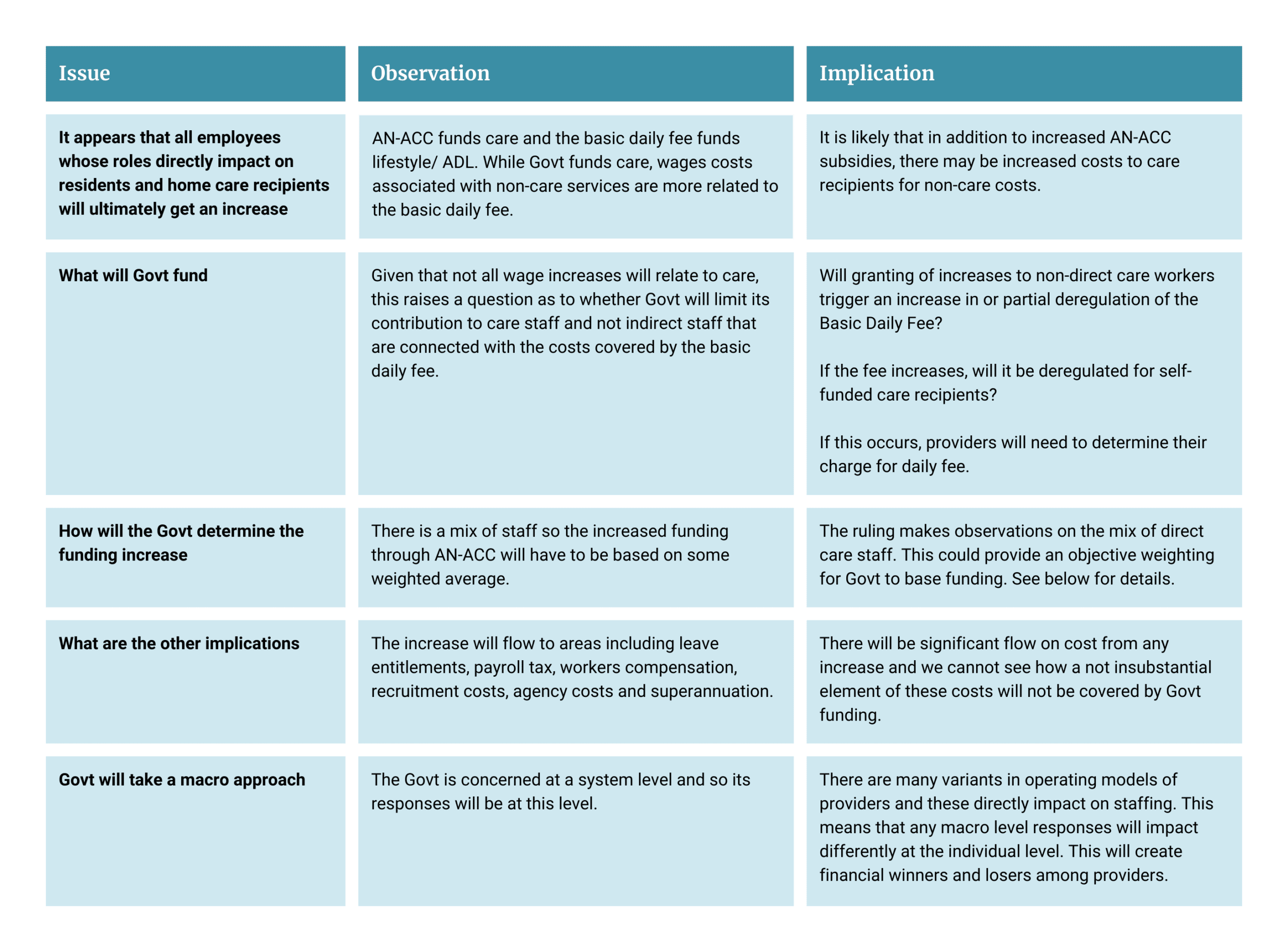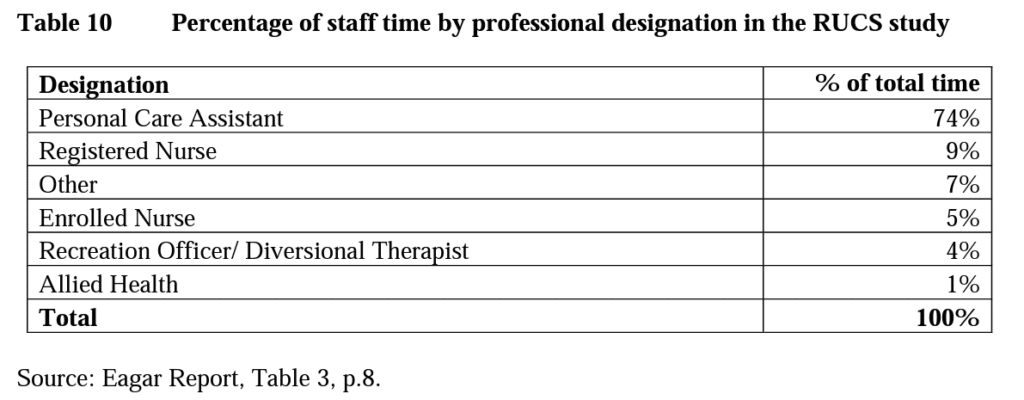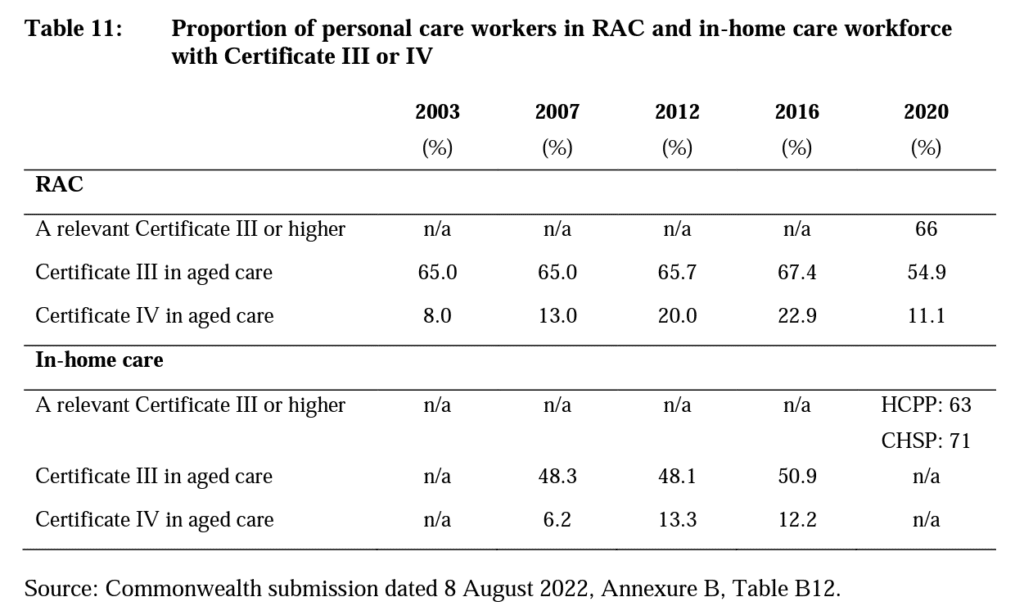We know you’re busy, so we’ve taken the time to review the Fair Work Commission decision(s) relating to the application by a number of parties to seek an increase in the minimum wage for certain workers in the Aged Care Sector.
In this summary, we’ve outlined what we see as the key decisions and timelines arising therefrom and then given our initial thoughts on some of the implications and recommended actions for employers.
 The Decisions
The Decisions
As we read the ruling, we see the following key decisions in the case:
The final decisions will ultimately impact the following classes of employees
• Personal care, which deals with Personal Care Workers (PCWs)
• Food services, which includes cooks and chefs, and
• General and administrative services including cleaners, gardeners, clerks, drivers and maintenance employees.
• Home care workers
• RNs, ENs and AINs employed in aged care
 Timing
Timing
Given the interim decision, it is reasonable to assume that the Dept and Gov will now apply themselves to providing input on the timing to introduce the 15% increase, any additional increase and further employees to be covered by the applications.
As to the timing of increases, the ruling makes the following observations:
There are two immediate issues in relation to the decision that providers need to deal with:
Our speculation on these issues is as follows:
How much
We expect that the initial increase will be 15%, we base this on the finding that:
- current rates are below the work value and
- the Commission is at pains to point out that further consideration of the additional 10% will follow.
Given this context, it would seem appropriate to start with 15% and then stage any additional increase.
When will it commence
We think it is likely to apply from July 1, 2023. We hold this view for the following reasons:
- Given that the Commission has made an interim decision it will be keen to have this implemented as soon as is practical
- The Act sets a default provision, of July 1 next occurring after any decision, this is the safe/normal option
- The Commission recognises the complexity of funding the increase so allowing the Govt to include this in the May budget makes sense
- Practically as parties make further submissions it will take time for the Commission to rule on these submissions
 The Implications
The Implications
Because individual providers’ situations vary and there are non-care cost elements, we anticipate that overall, there will be a net cost to providers.
We hold this view based on the following observations:

 Impact on Funding and Cost
Impact on Funding and Cost
As we understand it, the Govt position with AN-ACC funding is designed so that providers do not profit from the acuity of residents. In essence, it’s a cost recovery model. This is supported by our calculations of the increased funding under AN-ACC relative to ACFI and the cost of the required increased care minutes under AN-ACC which showed that the increased funding equated to the anticipated increased staffing.
Based on this, we assume that the Govt will seek to correlate its contribution to the increased cost of care to some objective benchmark of that cost.
Table 10 (section 624) and Table 11 (section 686) in the decision enables a profile of a “standard” workforce structure to be developed, indeed the AN-ACC funding scales are based on the RUCS study findings. As AN-ACC is based on the RUCS, Govt can simply increase AN-ACC at all levels by the increases as they are phased in. While such an approach would address the issue for direct care workers, it does not deal with all other categories of workers in aged care who are likely to receive an increase under the final determination.
Table 10 (section 624) picks up the staff breakdown that was part of the RUCS study

Table 11 (section 686) contains information provided by the Commonwealth in its submission of the proportion of care workers by certification status.

While the above presents a coherent macro approach, it immediately becomes clear that there will be variations around this normal staff distribution, arising from such issues including scarcity of particular qualified staff, care models of individual operators, minimum shift and roster hours. In all of this, we cannot see how there will not be losers from whatever funding increase is determined to be appropriate.
Once you understand the relative use of labour, it is possible to build a marginal cost model based on this standard structure. This can then be applied to the care minutes under AN-ACC to obtain a standard marginal cost per resident per day at the facility level. With this information, you can quickly assess the net impact of funding increases and the cost increases and determine how to respond with the pricing levers available to individual providers.
 Our Recommendations
Our Recommendations
Based on this decision, we recommend providers consider the following in the coming months:
- Having a robust methodology behind your rostering that matches both the mix of staff and the quantum of resourcing relative to current occupancy. This should be the basis on which rosters are developed and managed.
- It is difficult to constantly adjust rosters as this directly impacts on the lives and incomes of your staff. This means that robust Enquiry and Admission functions are becoming more critical, these include a Unique Resident Value Proposition.
- Because Govt will constantly seek to minimise the aggregate cost of care, providers need to respond by maximising their entitlement to Govt subsidies.
- To supplement limited Govt funding, providers need to maximise non-Govt funding which is achieved by embracing Additional Services and Accommodation Revenue Management.
- While we do not know what the future looks like in relation to wages and Govt contribution, we do know that it will be different to the present. The appropriate response to this is to undertake scenario planning and war gaming exercises.
- As you start the budget cycle, it might be appropriate to develop multiple scenarios that accommodate a range of outcomes from the interim decision.
 How can Pride Living help
How can Pride Living help
Many of our clients and key contacts receiving this Insight have already experienced how we can help build Provider sustainability through the following service offerings:
PASS - Pride Additional Services Suite
Our market leading Additional Services Design Implementation and ongoing management service.
Sustainable Facility Resourcing
Our proven review and development of sustainable rosters across all in facility staff that matches revenue, acuity and model of care to resourcing.
ROAR - Reimagine Occupancy & Accommodation Revenue
Our integrated approach to setting accommodation charges, managing referral channels and positively influencing enquirers to choose your facility.
AN-ACC Optimiser Services
We ensure your staff are appropriately equipped to understand and manage the critical task of reassessment to ensure you are obtaining all the subsidy funding you are entitled to.
At the outset, we acknowledged that many of our readers will be overburdened with all that is happening in the sector. With this in mind, we invite you to contact us if you would like support in building the scenario models that will underpin successful navigation of the changes in employee remuneration rates.
Bruce Bailey – Managing Director



